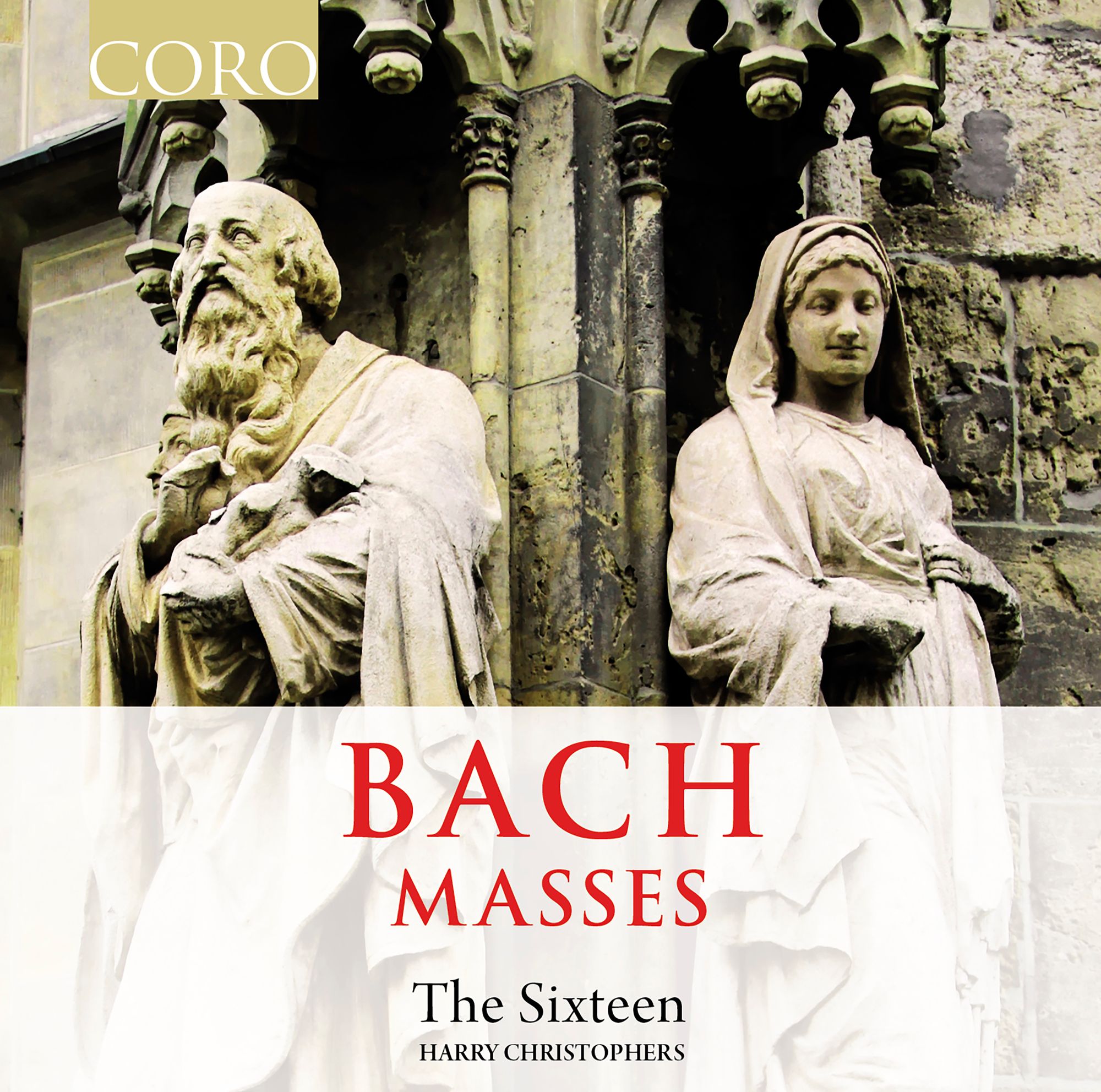Bach Masses, together at last: The Sixteen
The performances are faultless, the spirit magnificent.

I say “together at last” as these two discs have previously been released seperately (COR16115 and COR16120) and now appear together for the first time - retail price seems to be just a touch over £20, which is remarkable.
So, here are Bach's four Lutheram Masses. Sometimes each piece is listed as “Missa brevis” (plural Messae breves - short masses). There is much use of parody here, a technique in which a composer uses matieral from other pieces in a new context. Handel was an aabsolute master of this, but so was Bach, and 20 of the 24 movements in the Masses are parodies of music from earlier cantatas - so it makes perfect sense to programme a relevant Cantata between each pair of Masses to provide two perfectly filled discs. A useful list of the source origins of the music can be found here.
The Sixteen is a group of singers at the very top of their game, under the expert guidance of Harry Christophers. The group may be called The Sixteen, but these pieces, claims Christophers and how right he is) “warant a solo voice approach”; he uses two voices to a part in the choruses. The performances are faultless, the spirit magnificent.
The Mass in G-Minor, BWV 235 is heard first. All of the four Masses share the same form: a Kyrie followed by a five-movement Gloria. The performances are light and yet have tremendous emotional and spiritual depth. Try the Gloria from the G-Minor for some virtuoso singing, full of joy and light. Surely this is Bach performance at its best:
.. and we can hear Bach's contrapuntal mastery at work in the bass solo “Gratias agimus tibi,” sung by Eamonn Dougan:
Bach loved to write arias with solo instruments (an obbligato part), like here - the blissful “Qui tollis” from BWV 235, Hannah McLaughlin playing the notoriously difficult period oboe to perfection againsteor Mark Dobell's vocal line:
It is worth using BWV 235 as an example of the structure Bach uses, and also how Christophers' performances work, so here's the final chorus, a wonderfully transparent “Cum sancto spiritus”:
The central Cantata in this instance is No. 102 (remember BWV and the number of the Cantata identical), ”Herr, deine Auden sehen nach dem Glauben!” (Lord, your eyes look for fath!), written for the tenth Sunday after Trinity, and frem Bach's third cycle of Cantatas , first performed 25 August, 1726 - related because parodies appear in BWV 235 (Kyrie), while movements three and five find their way into BWV 233. The piece is effectively in two parts, although appears here as a continuous set of movements for reason that will become obvious: the sermon would have been given between the fourth and fifth movements. As so often, the Cantata begins with a chorus and ends with a chorale.It also holds another of those wonderful solo movements with obbligato instrument, here flute (Christine Garratt) and tenor Jeremy Budd, both in top form:
Closing the first disc is the Mass in F-Major, BWV 233, with some remarkable horn playing in its Gloria from Anneke Scott and Joseph Walters:
... and surely there are few more touching movements in all of Bach than the ”Qui tollis”, an aria for soprano (Grace Davidson in purest vocal form) and oboe:
Perhaps even ore remarkable is the “Quoniam,” with its tapestry of solo strings against an alto solo, sund here by the magnificent counter-tenor Robin Blaze:
The second disc is similarly structured: two Masses (G-Major, BWV 236 and A-Major, BWV 234) sandwiching a relevant Cantata (BWV 79). But do not expect any sort of emotive repetition: the opening Kyrie of the G-Major Mass is remarkable in its serenity and poise (and just listen to the s,oothness of The Sixteen's descending chromatic lines):
That serenity extends to the Gloria, busy though it is contrapuntally. The Sixteen's nimble way with the music is remarkable. There is an sort of unspoken virtuosity here everywhere - the bass “Gratias” (Dougan again). But perhaps most remarkable here is the “Domine Deus,” a duet for soprano Davidson) and alto (William Purefoy), the voices ravishing:
The introspective nature of the Mass ontinues in the “Quoniam’ (Jeremy Budd with a plaintive oboe obbligato) before this final chorus with its positvely LUMINOUS opening:
The Cantata BWV 79, “Gott der Herr ist Sonn' und Schild” (God the Lord is sun and shield, composed for Reformation Day 1725, and again from the third cycle) is a remarkable piece, opening with the most brilliantly open-air, almost hunting orchestral passage before the choir enters:
Parodies appear in the opening chorus of BWV 236 and the Quoniam of BWV 234. Moving from teh opening G-Major to its dominant, D-Major, the aria “Gott ist unsre Son' und Schild” follows, and is remarkable for Robin Blaze's superb contribution, along with the oboe obbligato from Hannah McLoughlin. Listen, too, to the beautifully light duet “Gott, ach Gott, verlaß die Deinen nimmermehr” between Julia Doyle and Eamonn Dougan (see Spotify links below).
Finally, the Mass in A-Major, BWV 234, the perfect close, with its sense of transcendental calm in the Kyrie and its text focus on Christ's taking on the sins of the world:
This Mass has one of the happiest Glorias around ... until it isn't. The contrasts really are remarkable (as is the scoring), almost manic. Again, it is the “Qui tollis” that speaks the deepest, Bach using tissue thin textures against Julia Doyle's supremely beautiful lines. The contrasts in this Mass seem emphasised by Christophers - the “Quoniam” (solo William Purefoy) is both interior and incredibly difficult; only when we get to the “Cum Samcto Spiritu” is some sense of resolution felt.
Daniel Hyde's extensive booklet notes are phenomenally informed (almost worth the price of the set itself). A bargain.
